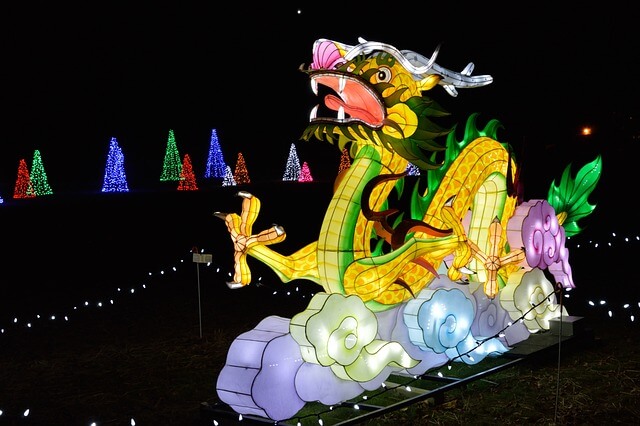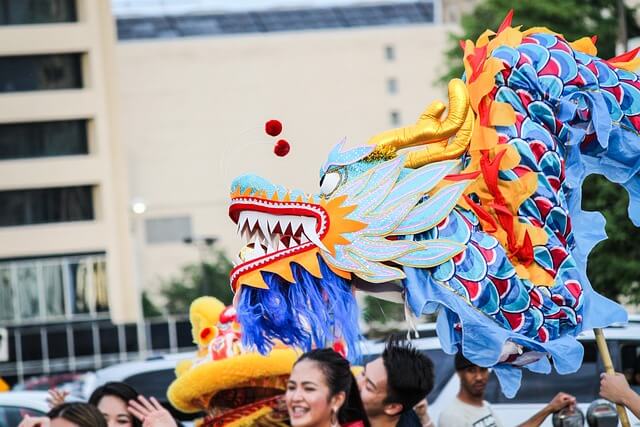
Welcome, adventurers, to an odyssey through the enchanting world of Asia’s most mesmerizing Dragon Festivals.
These vibrant celebrations are not merely events; they are cultural symphonies that resonate with the beating heart of ancient traditions and the vibrant pulse of modern life.
From the bustling streets of China to the serene valleys of Bhutan, each festival weaves a tapestry of myth, tradition, and community spirit. Join us on this journey as we uncover the majesty of Dragon Festivals and the captivating experiences they offer.
Common Questions & Concerns:
What defines a Dragon Festival, and why are they celebrated?
Dragon Festivals are deeply rooted in the rich tapestry of Asian cultures, honoring mythical creatures symbolizing strength, wisdom, and good fortune.
These festivals typically coincide with significant dates in the lunar calendar or commemorate historical events of cultural importance.
Where can one experience these festivals?
Across Asia, from the vast expanse of China to the tranquil landscapes of Bhutan, Dragon Festivals are celebrated with fervor and joy.
Each destination offers a unique cultural experience, blending ancient traditions with contemporary celebrations.
How does one prepare for attending a Dragon Festival?
Preparation is essential for making the most of your Dragon Festival experience. Research the festival’s schedule, familiarize yourself with local customs, and be ready to immerse yourself fully in the sights, sounds, and flavors of the event.
Guide to Asia’s Most Spectacular Dragon Festivals:
The Majestic Dragon Dance: China’s Spring Festival
- China’s Spring Festival, also known as Chinese New Year, is a jubilant celebration marking the beginning of the lunar new year.
- Central to the festivities is the iconic Dragon Dance, a mesmerizing display of artistry and coordination that symbolizes prosperity and good fortune.
- The streets come alive with the rhythmic beat of drums and the vibrant colors of dragon costumes, as performers weave their way through the crowds, captivating onlookers with their grace and agility.
- In addition to the Dragon Dance, visitors can indulge in traditional foods, vibrant parades, and dazzling fireworks displays, making China’s Spring Festival an unforgettable experience for all who partake.
- Keywords: China’s Spring Festival, Chinese New Year, Dragon Dance, cultural celebration
Fire & Water: Japan’s Golden Dragon Matsuri
- Japan’s Golden Dragon Matsuri is a spectacle of fire, water, and ancient traditions that takes place in the historic city of Kyoto.
- Held annually at the Yasaka Shrine, this festival honors the spirit of the dragon and its role as a guardian deity of water.
- The highlight of the festival is the procession of majestic dragon floats, adorned with intricate designs and illuminated by lanterns, as they wind their way through the streets of Kyoto.
- Accompanied by the rhythmic beat of taiko drums and the chanting of priests, the dragon floats create a mesmerizing sight, evoking a sense of awe and reverence among spectators.
- Visitors to the Golden Dragon Matsuri can also participate in traditional rituals, such as purifying ceremonies and prayers for good fortune, adding depth and meaning to their festival experience.
- Keywords: Golden Dragon Matsuri, Kyoto, Japanese traditions, cultural celebration
Dragons in the Land of the Ascending Moon: Bhutan’s Paro Tsechu
- Bhutan’s Paro Tsechu is a sacred festival held annually in the picturesque town of Paro, nestled in the foothills of the Himalayas.
- Rooted in Buddhist tradition, this vibrant festival celebrates the life and teachings of Guru Rinpoche, the saint who introduced Buddhism to Bhutan.
- Central to the Paro Tsechu are the masked dances, known as cham, which depict stories from Bhutanese mythology and serve as a form of spiritual teaching and contemplation.
- The highlight of the festival is the unveiling of the thongdrel, a massive silk tapestry depicting Guru Rinpoche and other revered deities, which is unfurled at dawn to bless the gathered crowds.
- In addition to the religious ceremonies, visitors to the Paro Tsechu can enjoy traditional music and dance performances, as well as explore the scenic beauty of Paro Valley and its surrounding monasteries.
- Keywords: Paro Tsechu, Bhutanese culture, Himalayan traditions, Buddhist festival
Awakening the Dragon: Vietnam’s Mid-Autumn Festival
- Vietnam’s Mid-Autumn Festival, also known as Tet Trung Thu, is a joyous celebration that takes place on the fifteenth day of the eighth lunar month.
- Rooted in ancient agricultural traditions, this festival celebrates the harvest season and honors familial bonds.
- Central to the Mid-Autumn Festival is the tradition of carrying colorful lanterns and parading through the streets, symbolizing the return of the full moon and the abundance of the harvest.
- Another highlight of the festival is the custom of making and sharing mooncakes, a symbol of reunion and gratitude among family members and friends.
- Throughout Vietnam, communities come together to enjoy lantern-lit processions, traditional music and dance performances, and the spectacle of dragon-shaped kites soaring high in the night sky.
- Keywords: Mid-Autumn Festival, Tet Trung Thu, Vietnamese traditions, family celebration
Engagement & Interaction
- Have you ever had the opportunity to witness a Dragon Festival firsthand? Share your favorite memories and experiences in the comments below!
- Which of these captivating Dragon Festivals intrigues you the most? Tag a friend you’d love to explore Asia’s cultural wonders with!
- Don’t forget to share this comprehensive guide with fellow adventurers and culture enthusiasts to inspire their next travel adventure!

Conclusion
As we conclude our exploration of Asia’s most spectacular Dragon Festivals, we are reminded of the profound beauty and diversity of our world’s cultural tapestry.
Whether you find yourself captivated by the vibrant energy of China’s Spring Festival, the spiritual serenity of Bhutan’s Paro Tsechu, or the familial warmth of Vietnam’s Mid-Autumn Festival, each celebration offers a unique opportunity to immerse oneself in the traditions and values of another culture.
As you embark on your own cultural odyssey, may the spirit of the dragon guide you on your journey, illuminating your path with wisdom, strength, and good fortune.
Safe travels, fellow adventurers, and may your experiences be as enriching and transformative as the festivals themselves!
FAQs
What are some of the most famous dragon festivals in Asia?
Some of the most famous dragon festivals in Asia include:
- Chinese Dragon Boat Festival – Celebrated in China, Hong Kong, Taiwan and among Chinese communities worldwide. Features dragon boat racing, eating zongzi (sticky rice dumplings), and other traditions.
- Bun Festival in Hong Kong – Held on Cheung Chau island, features colorful dragon dances, bamboo-pole climbing competitions, and the stacking of steamed buns on towers up to 60 feet high.
- Naga Fireball Festival in Thailand – Mysterious reddish balls of light rise from the Mekong River in Nong Khai province, believed to be the breath of the Phaya Naga, a mythical snake-like creature.
What is the significance of dragons in Asian cultures?
Dragons are revered in many Asian cultures as symbols of power, strength, good luck and prosperity. They are associated with emperors, the weather, and the life-giving forces of water and agriculture. Dragon dances and imagery are common in festivals, architecture and art across the region.
How do dragon festivals differ across Asia?
While many dragon festivals share common elements like dragon dances and boat races, each has unique local traditions and cultural influences. For example, the Bun Festival in Hong Kong features bamboo-pole climbing competitions, while the Naga Fireball Festival in Thailand centers around the mysterious fireballs that rise from the Mekong River.
What are some of the most visually stunning aspects of dragon festivals?
Dragon festivals feature vibrant colors, elaborate costumes, and intricate dragon puppets and floats. The dragon dances are particularly mesmerizing, with performers skillfully maneuvering long, sinuous dragon puppets to the beat of drums and cymbals. Fireworks, lanterns, and the stacking of steamed buns into tall towers also make for stunning visuals at some festivals.
How can travelers experience dragon festivals in Asia?
Many dragon festivals are open to the public, so travelers can attend to witness the spectacle. However, some have restricted access or occur in remote areas, so it’s best to research each festival and plan travel accordingly. Joining a guided tour is an easy way for travelers to experience multiple dragon festivals in Asia.
Leave a Reply